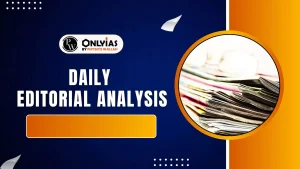The President of the Philippines, Ferdinand R. Marcos Jr., also popularly known as Bongbong Marcos, is visiting India from August 4-8.
- This is Marcos Jr’s first visit to India since he was elected President of the Philippines in 2022.
- The visit aims to deepen ties and elevate bilateral relations to a strategic partnership
Strategic Significance of the Visit
- Assertive Stance Against China: The Philippines has adopted a firmer position against Chinese actions in the South China Sea under President Ferdinand Marcos Jr.
- Unlike previous administrations, Manila is now openly challenging Beijing’s claims and demanding the return of its disputed islands.
- India in the last three years has been responsive to the Philippines’ position on the South China Sea (SCS).
- Diversification of Security Partnerships: Manila is actively forging defence agreements with key regional players such as Japan, Australia, and the United States to counterbalance China’s expanding influence.
- Collaboration in Maritime Security: Philippines has decided to join the International Fusion Centre established by India for the Indian Ocean Region.
- India’s partnership with the Philippines serves as a cornerstone of its “Act East” Policy, Vision MAHASAGAR, and its broader Indo-Pacific strategy.
- Economic Opportunities and Growth: Despite possessing a higher GDP per capita, the Philippines acknowledges India’s status as an emerging economic powerhouse, achieving nearly 7% annual growth.
- Increasing Bilateral Trade: While historically modest, trade between India and the Philippines is gaining momentum.
- The Philippines ranks sixth among the 10 ASEAN member states in trade with India.
- In 2023–24, bilateral trade was $3.5 billion.
- Indian exports accounted for approximately $2 billion, while imports from the Philippines reached about $1.5 billion.
- Overcoming Trade Hesitancy: Manila has traditionally been a hesitant participant in ASEAN-India trade frameworks, often being the last to ratify major agreements.
- However, this hesitancy is now diminishing, evidenced by the signing of a Customs Cooperation and Mutual Assistance Agreement in June 2023 and the resumption of negotiations for a Preferential Trade Agreement (PTA).
- ASEAN Chairmanship: The Philippines is set to assume the chairmanship of ASEAN next year, providing a crucial opportunity to further advance bilateral deals and bolster the India-ASEAN Comprehensive Partnership.
- Leveraging Regional Supply Chain Shifts: Indian investments in the Philippines amount to approximately $5 billion, primarily in sectors like IT, pharmaceuticals, healthcare, and biomass energy.
- The Filipino investments in India, while currently limited, are expected to grow significantly, especially with the ongoing shifts in regional supply chains as companies look to diversify their manufacturing bases away from countries like China.
- Financial Technology Cooperation: Both nations identify financial technology (FinTech) as a priority area.
- A Memorandum of Understanding (MoU) was signed in 2023 to strengthen cooperation in FinTech, with the Philippines expressing interest in adopting India’s successful UPI model for digital payments.
- Limited Benefits from Other Pacts: The Philippines is a member of the Regional Comprehensive Economic Partnership (RCEP) and the Indo-Pacific Economic Framework for Prosperity (IPEF), but it has not emerged as a major trade actor in either.
- Addressing Connectivity Gaps: Due to the geographical distance, the Philippines has long lacked direct shipping, flights, or connectivity initiatives of the kind India already enjoys with other ASEAN nations.
- The Philippines’ decision to grant visa-free entry to Indian nationals, coupled with Air India’s move to start direct flights, is expected to boost tourism and enhance people-to-people contact, an area in which the India-Philippines partnership has historically lagged behind other ASEAN countries.
- The success of direct connectivity in promoting tourism in countries like Vietnam, Cambodia, and Indonesia reinforces this trend.
- While the Philippines received 1.4 million tourists in 2023, only around 30,000 were from India. This number is expected to grow rapidly, setting the stage for a deeper and more dynamic India-Philippines relationship
Conclusion
Manila’s heightened interest in New Delhi represents a deliberate strategic move, acknowledging India’s growing economic influence and shared geopolitical concerns.
- This partnership is poised to be a pivotal element in shaping the future dynamics of the Indo-Pacific region.
![]() 8 Aug 2025
8 Aug 2025

